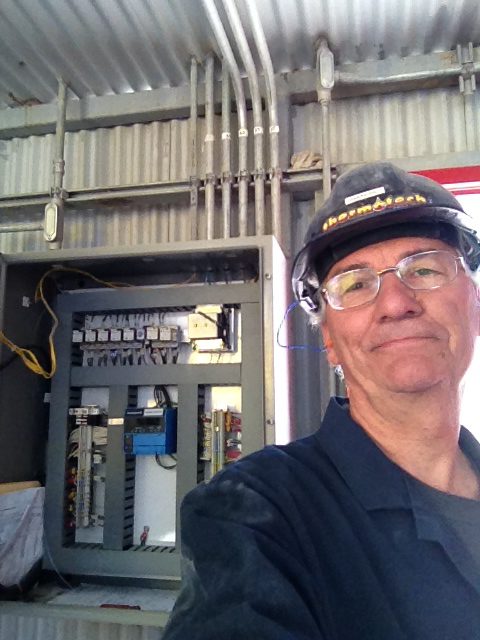Diaries of an Industrial Combustion Specialist
My wife and I fell in love with Nicaragua. And after spending four winters there, we decided that we wanted to do more to support development in this vibrant Central American country.

I recently retired after a 40-year career in industrial combustion, so naturally I wanted to find a place to use my technical knowledge in service of Nicaragua. I searched for international non-governmental organizations online and, serendipitously, found a Canadian organization – Taking Root – with a head office only a few blocks from my home in Montreal. What a pleasant surprise!
I learned from Taking Root’s website that they work directly with farmers to carry out important reforestation work. So I called them to offer my services and it turned out that my proposal coincided with one of Taking Root’s immediate needs – to figure out a way to turn wood waste into charcoal.
Initially, I was a bit confused by their request. Why would an organization focused on reforestation want to make charcoal? Especially when we know that charcoal production is an important driver of deforestation?
Taking Root’s Executive Director, Kahlil Baker, explained to me that his goal was to prototype environmentally friendly (“green”) charcoal made entirely from old unusable wood from community-owned forest plantations. Kahlil felt that by making green charcoal readily available in Nicaragua, locals might stop the highly polluting practice of making charcoal from traditional methods used in many countries in the world. He saw potential for the new product to fit into Taking Root’s mission to create financial incentives to promote reforestation.
I immediately jumped at the scientific challenge of turning wood waste in charcoal. According to my initial calculations, each tonne of green charcoal could prevent the loss of 700m2 of tropical forest and the emissions of 15 tCO2. This number comes from both a combination of avoided emissions from not cutting down forests and much cleaner production methods. Imagine the huge environmental impact of the project! But could it be done?
I worked with Taking Root to develop baseline criteria for the construction of a green charcoal reactor:
- Unlike traditional charcoal production methods, there should be no pollution, and this needs to be scientifically evaluated;
- It needs to work with small pieces of wood that come from waste from the wood workshop and other pieces of scrap wood. Again, this is contrary to traditional production methods that require entire logs and hence drive deforestation;
- It needs to be safe to use;
- It needs to be easy to use.
I got straight to work. The first step was to create a prototype of the reactor at my isolated cottage in Mauricie, Quebec. After an entire summer of tinkering and many trials, my machine performed brilliantly. I was now confident that I would be able to do this at a larger scale.
I then traveled to Nicaragua to build a similar model. Vancouver-based independent documentary filmmaker, Sandra Ignagni, who heard about my story through Kahlil, accompanied me and recorded my daily progress. The pressure was on!

In brutal heat and living conditions in the remote Northern region of San Juan de Limay, I worked day in and day out for six long weeks to replicate my small prototype on an industrial scale and with no budget. I decided to use only locally sourced materials. Needless to say, things did not progress as easily as expected. The Nicaraguan woods gave off an amazing amount of energy. Combined with the lower quality materials that I had access to, it became apparent that I would need a new design.
By early 2016, after much experimentation and trial and error, I solved most of the technical issues, but the reactor still needs work in order to be operated efficiently and safely by local staff. The high temperatures and pressure require quality materials that I was simply unable to source in Nicaragua.
I will be back at it next year. I’m counting down the months until I can return to Limay and meet my goal of making a truly sustainable charcoal. My key challenge will be finding a Canadian or international partner to help me bring better quality materials to the project. I’m on it.
Even with the challenges I encountered, my trip to Limay was a fantastic learning experience for me. Taking Root’s staff is truly dedicated to the cause, continuously supportive, always with a positive attitude. Big thanks to Elsa Gonzales and Elvin Castellon who have become true friends. I would also like to thank the entire Nicaraguan team who really made me feel at home.
Hasta la proxima.
Daniel St-Pierre is a new member of the Taking Root family. He is recently retired after 40 years working in industrial combustion. He lives in Montreal with his wife Louise and spends his winters in Nicaragua.